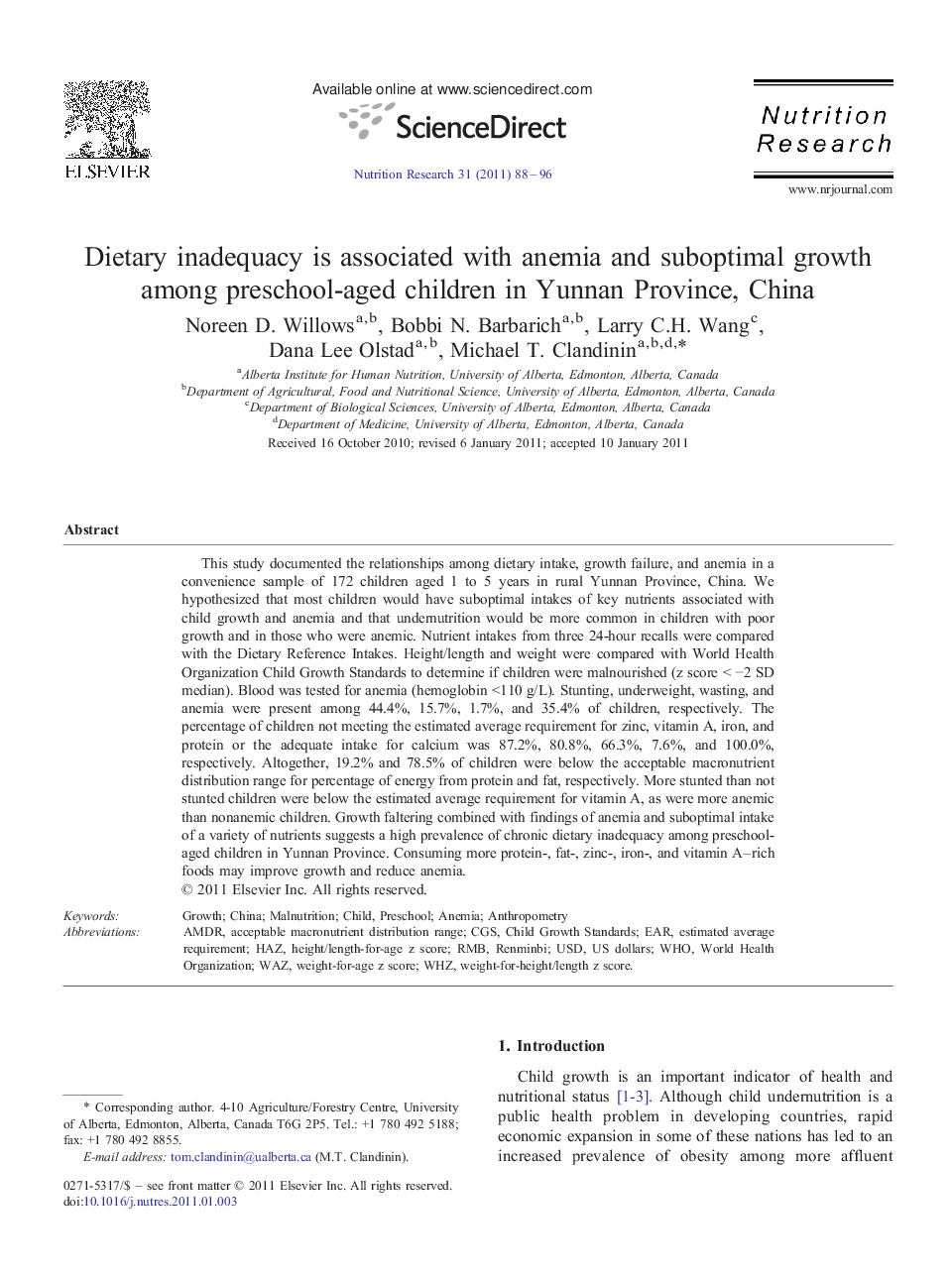| Article ID | Journal | Published Year | Pages | File Type |
|---|---|---|---|---|
| 5904569 | Nutrition Research | 2011 | 9 Pages |
This study documented the relationships among dietary intake, growth failure, and anemia in a convenience sample of 172 children aged 1 to 5 years in rural Yunnan Province, China. We hypothesized that most children would have suboptimal intakes of key nutrients associated with child growth and anemia and that undernutrition would be more common in children with poor growth and in those who were anemic. Nutrient intakes from three 24-hour recalls were compared with the Dietary Reference Intakes. Height/length and weight were compared with World Health Organization Child Growth Standards to determine if children were malnourished (z score < â2 SD median). Blood was tested for anemia (hemoglobin <110 g/L). Stunting, underweight, wasting, and anemia were present among 44.4%, 15.7%, 1.7%, and 35.4% of children, respectively. The percentage of children not meeting the estimated average requirement for zinc, vitamin A, iron, and protein or the adequate intake for calcium was 87.2%, 80.8%, 66.3%, 7.6%, and 100.0%, respectively. Altogether, 19.2% and 78.5% of children were below the acceptable macronutrient distribution range for percentage of energy from protein and fat, respectively. More stunted than not stunted children were below the estimated average requirement for vitamin A, as were more anemic than nonanemic children. Growth faltering combined with findings of anemia and suboptimal intake of a variety of nutrients suggests a high prevalence of chronic dietary inadequacy among preschool-aged children in Yunnan Province. Consuming more protein-, fat-, zinc-, iron-, and vitamin A-rich foods may improve growth and reduce anemia.
